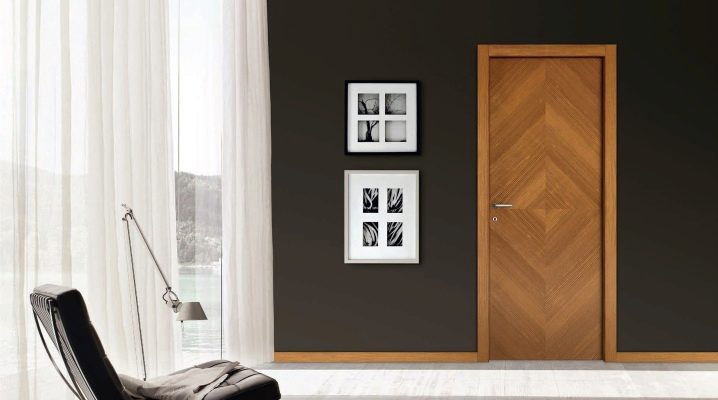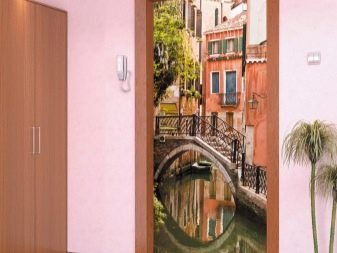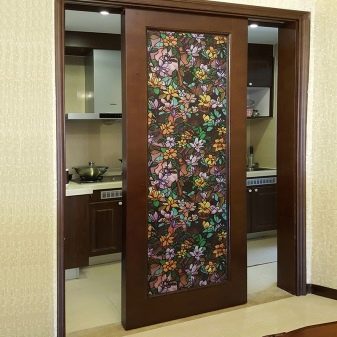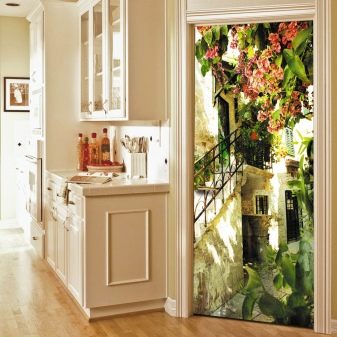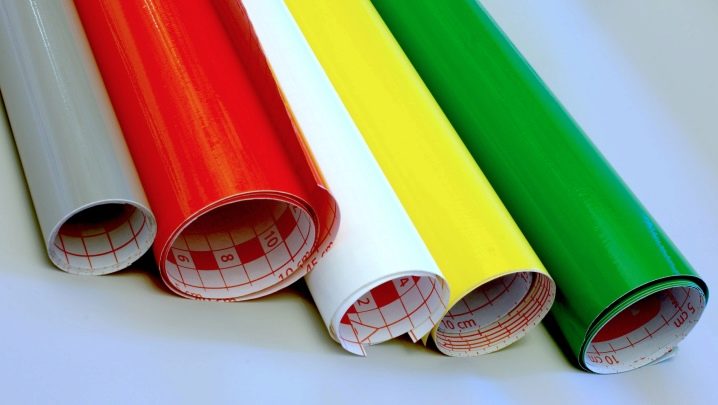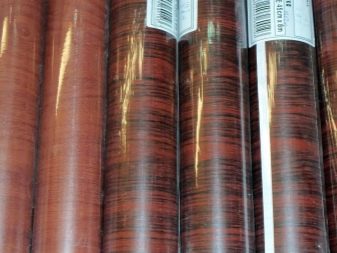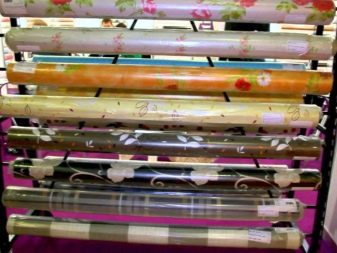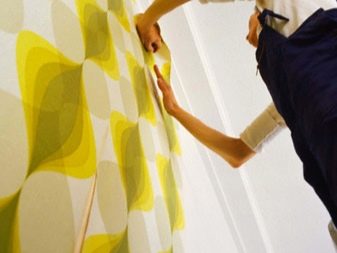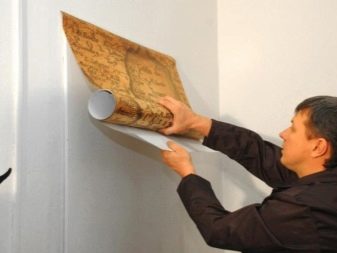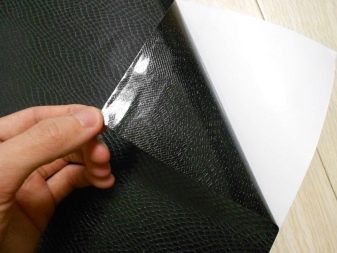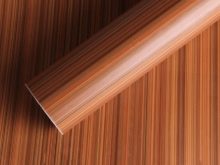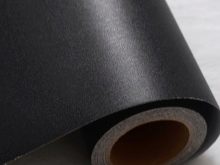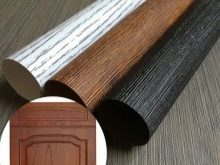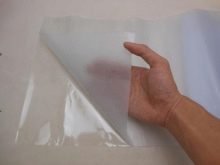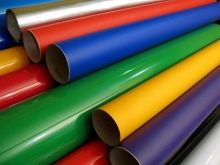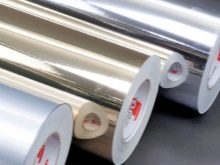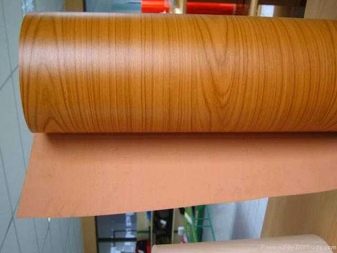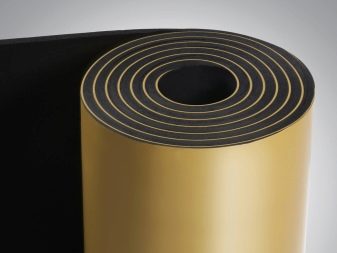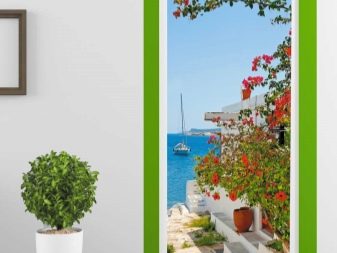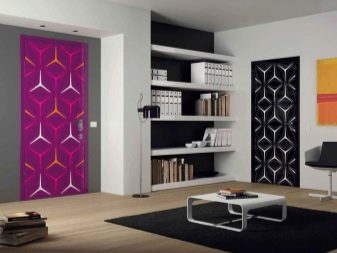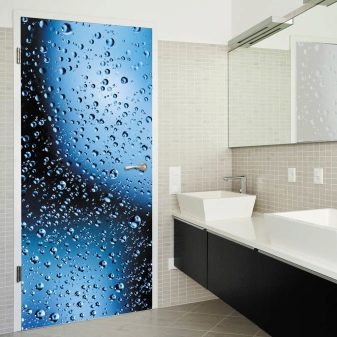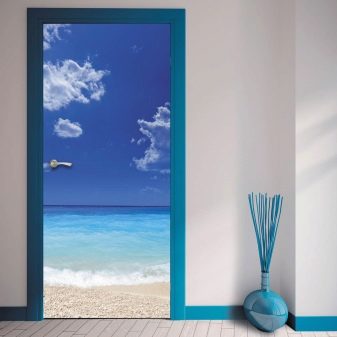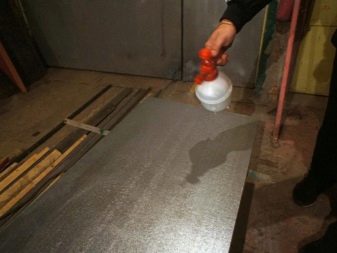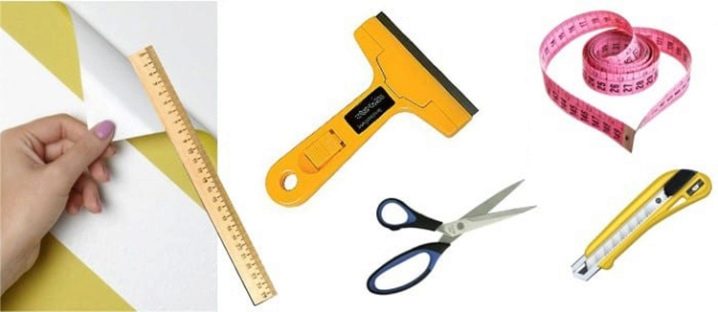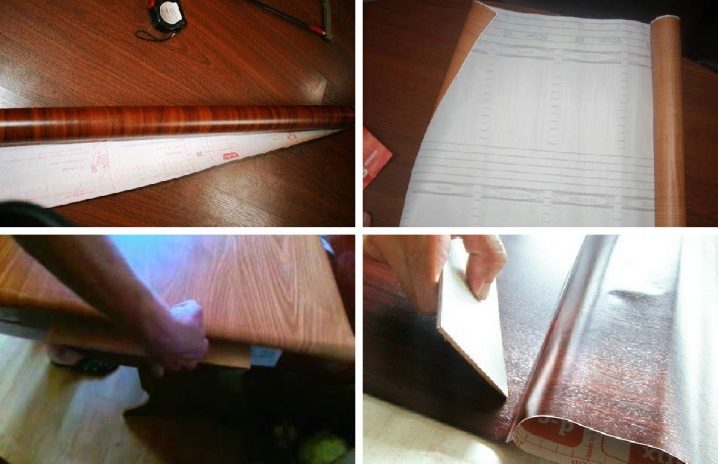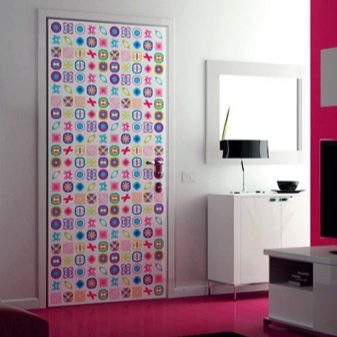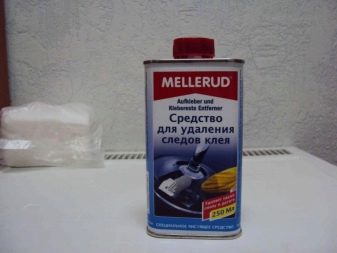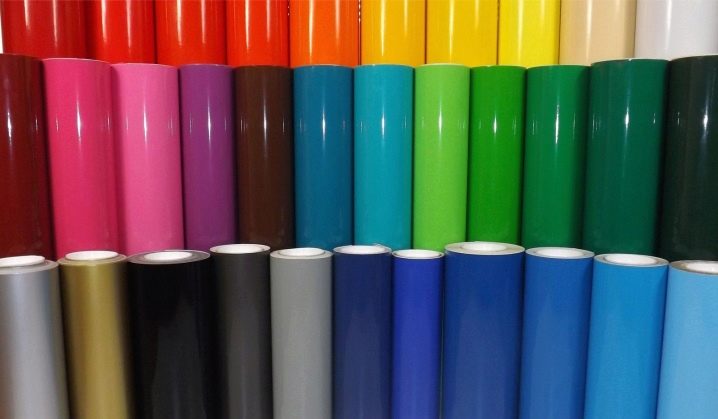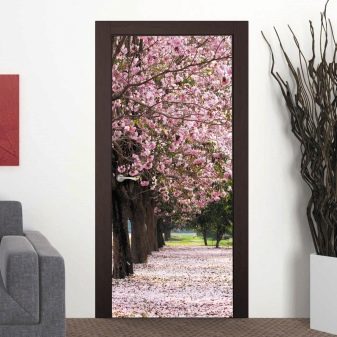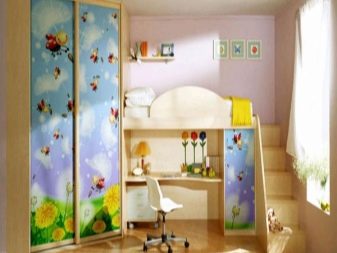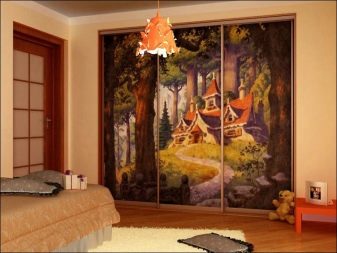Adhesive film for doors
Repair is a solid and expensive business. This topic is particularly relevant for doors that have lost their former attractiveness, becoming inconspicuous and even sloppy. Few can afford the purchase and installation of new designs - it is troublesome and has to afford. To give the doors a beautiful and fresh look, you can do with a special self-adhesive film for the doors. This material has a wide range of applications and has a lot of advantages.
What it is?
Self-adhesive film for doors is a multi-layer composite material consisting of four layers:
- paper or film base, different thickness;
- a layer of special uniformly applied glue, resistant to drying;
- anti-adhesive coating of protective (temporary) paper;
- protective paper layer removed during application.
In other words, it is the usual paper with adhesive composition for furniture renovation, sold in rolls up to one meter wide. It has a subtype with the name of the finish film, which is made using special types of resins.
Benefits
Self-adhesive film - an important tool for repair, with seeming simplicity, it is an indispensable tool and has a lot of advantages. Adhesive wallpaper on paper or film basis is deservedly one of the key elements of the finish.
This material:
- can be an independent element of style or a link of individual interior items;
- it is made on the special equipment on new technologies, allowing to achieve the most qualitative and practical characteristics;
- is a profitable finishing material, differing in budget cost and ease of use;
- It has a rich color palette and a variability of the pattern, thanks to which it allows you to update the doors to reflect the available furniture or in contrast to it;
- it looks stylish and expensive, sometimes reminding the texture of natural material;
- regardless of the type produced, it is suitable for any type of door surface, if necessary closing wood, glass, metal, plastic construction elements;
- it is distinguished by excellent elasticity, which allows the film not to be glued on the door itself, on the nut, on the door frames, on the door trim;
- able to drastically change the visual perception of the home, varying the level of illumination of a particular room;
- there is always on sale, you can buy it in any store that sells wallpaper;
- differs in a variety of themes of the pattern, allowing you to successfully enter the doors in any design style, making them accents to the room, indicating the idea of style;
- has no caustic chemical smell and harmful components, therefore, it is suitable for renovating doors in any type of premises (apartments, offices, warehouses, in the country or in a private house)
- can be used for composite decoration, decorating in one design doors and some pieces of furniture (for example, kitchen);
- has a width variation, being issued in three categories: 45, 60 and 100 cm.
Self-adhesive film wallpaper is unique. In addition to updating old doors, it can replace their painting, and the result of applying the material is always at a high level.This finishing tool does not need to be dried after pasting the surface. Cloths with a film are convenient in that they allow care if dirt gets to the surface.
The film can be bought in whole rolls or in the form of a segment of the desired length (depending on the store-seller).
Minuses
With a lot of advantages at the self-adhesive film for the door there are several disadvantages.
She is:
- needs surface preparation, otherwise it gives out all the imperfections, accentuating the irregularities and different shades of the selected coating (it does not hold well on a plane filled with grease and dirt);
- requires a skillful approach to work and accuracy (with strong tension it can break, stretch, distorting the figure);
- not always performed with high-quality painting, so it can lose brightness;
- differs lightfastness exclusively in expensive canvases;
- is chosen thoroughly, otherwise it will not serve the due date.
If in the process of pasting the door plane to allow uneven tension of the finish film, over time it will begin to lag behind the plane. The polymeric material does not mask significant flaws in the door leaf or box.It can not be glued twice: separating it from the surface, straighten and re-stick perfectly problematic.
The capabilities of this finishing material depend on the raw materials from which it is made. Paper versions are cheaper, but during the operation of the door the surface of such a film does not include wiping or cleaning.
Based on practical considerations, manufacturers have to focus on the release of a ruler based on a dense film.
Kinds
Polymeric, paper or metallized material, able to help out in case of renovation of furniture of a rented apartment or budget repair is practical in wet rooms with large temperature differences. Self-adhesive decorative film for doors is durable and is divided into several varieties.
It happens:
- mirror;
- matte;
- glossy;
- transparent;
- polypropylene;
- laminated.
By type of adhesive layer, the finish is divided into:
- water based dispersion acrylate;
- analogue based on rubber.
How to choose?
For the purchase of PVC film to be successful, and the repair to be simple, the choice of finishing material will require knowledge of certain nuances.It is important to take into account the design of the film with the finishing effect. It happens:
- standard - with imitation of wood species, veneer, ceramics, mosaics, textiles, etc. (has a covering of a transparent or tinted plan);
- special - under the texture of the metal, the type of mirror, pile, the structure of the cork tree, as well as varieties with an unusual effect (for drawing with markers, crayons, writing temporary notes).
When buying it is important to consider:
- scope and compliance with the selected theme (MDF, wood, marble);
- compatibility of use with a specific model of doors (for sliding compartments, interior);
- type of room (for bathroom, living room, kitchen, nursery, etc.);
- the type of the glued surface of the door (for plastic, glass, veneered);
- the conformity of the pattern with the theme and color of the interior design;
- surface type of the finishing material (glossy is easier to wipe, due to glare, it adds more light to the room, matte is more difficult to maintain, but it looks more noble);
- the amount of material, taking into account the percentage of the marriage (there should be a minimum stock, with a shortage of material, the appearance of the door suffers) and a coincidence pattern.
The purchase consists of two trips to the store: the first time the raw materials are being watched, then the right amount is determined at home, the second visit will allow you to re-look at the chosen option and buy just as much as you need (sometimes seeing the film design a second time, it does not seem special, therefore later quite often there are disappointments).
The preparatory process involves a review of reviews about the quality of the product, its degree of relevance and durability in a particular room, durability and external characteristics.
How to paste?
Before you paste the door with a finishing film, you need to think about the design. A competent approach allows the use of materials of different colors. This approach is good mainly for professional designers, although if you wish, everything is possible for a novice.
It is possible to carry out the pasting of doors in the form of complex combinations, taking into account the peculiarities of the interior of a particular room (for example, to glue different parts of the door leaf with individual tones).
Door lining can be mirrored by changing the color on each side. It is important to take into account all the details, not forgetting the rack, box, opening.
Technology pasting implies the availability of the following equipment:
- tools for marking (tape measure, ruler, pencil or marker), cutting off excess fabric (scissors, stationery knife) and smoothing film (rubber spatula);
- materials for adjusting the position of the finish (water, spray) and working with corner elements (hair dryer);
- tools for surface preparation (sandpaper, primer, mastic).
The instruction for pasting doors with a self-adhesive finish film consists of several stages:
- Surface preparation: it is cleaned of irregularities, burrs, roughness (especially important for wood doors). In models with a painted surface, the drips of paint and the “risk” zone are removed, where the paint moves away from the plane. If the plane of the wood web has a glossy texture, it will be easier to glue on it.
- Primers of the prepared surface: reception allows to achieve maximum adhesion of the film to the glued surface.
- The markings of the polymer material in accordance with the pattern and trimming of excess fabric: measurements are transferred to the protective paper layer of the substrate, since they cannot be removed from the front side.
- Pasting.It is carried out in the direction from top to bottom. To do this, apply the top corner, combine it with the angle of the door, determining the direction of the blade down with the coincidence of the direction of the line edge of the door. Bending the edge of the substrate, glue the corner, and then gradually the remaining sheet of film. An important caveat: you can not completely remove the substrate, it is removed as gluing and retracting at each section of the bubbles with a rubber spatula.
It is important to do this carefully, otherwise you can ruin the film. Full hardening occurs within a few hours.
It should be borne in mind that the use of water does not always help, since excessive moisture spoils certain types of finishing material. To glue it on the second attempt will be problematic, since it is necessary to expel water. If it remains, the appearance of the finished work will suffer.
The hair dryer helps to melt the film somewhat so that it lays better and holds onto the surface more tightly.
How to remove?
Knowing certain tricks, removing the film from the surface, if necessary, is easy. This will allow you to easily remove the old coating, if you suddenly want to change the style of the room.It is not always suitable solvent to tear off the old finish, because not every drug can destroy the adhesive composition. To cope with the problem, you can note the methods of experienced craftsmen.
For example, if the canvas is whole, it is enough to peel off a small corner with a hair dryer, then gradually remove the finish film by slowly pulling it towards you (a hair dryer can be used pointwise, heating section after section with circular movements 10 cm from the heated surface).
You can use a special high-penetrating aerosol composition, called "Means for removing stickers and labels." It must be sprayed under the edge of the film, removing it as the composition penetrates to the surface between the wood board and the adhesive layer. For the same purpose, suitable VD-40.
If you still have faith in the solvent, you should choose 646 or white spirit, using a soft cloth to remove the remnants of glue, applying to the surface of its wet side and quickly wiping dry. Do not rub the solvent: this can provoke rubbing glue into the door.
It is not recommended to use fatty solvents for these purposes.Sometimes masters use rectified alcohol (96%) to clean the surface of the old film, noting that neither vodka nor medical counterpart will cope with this problem.
Options in the interior
To bring harmony into the interior of the home is not as difficult as it may seem at first glance. To do this, you can pay attention to the ideas of professional designers, adding to them something of their own: this way the style will be masterful and unique:
- decorating the door in glamor style will make it possible to designate the belonging of a room to the beautiful floor: due to the minimum of small details, the drawing on the door will be harmonious;
- you can restore the interior door in the spirit of the Venetian era: a stylish look of photo printing with 3D effect looks original and favorably beats up the imperfections of the surface of the door leaf;
- Admirers of flower arrangements will like facing doors with a film with a floral theme in the form of large flowers of iris: choosing colors to match the wallpaper of the walls, you can achieve harmony of the color type of the design;
- art-tinted cabinet doors with a picture of a beloved cartoon will add a special atmosphere to the room, endowing it with good and positive: the pictures are harmonious with hitting at least one shade to match the existing interior items;
- if the room is small, you can beat the tinted doors with small patterns on the film: a summer sketch will bring warmth to the space, and repeating the pattern on the furniture plane will create a composite ensemble effect that, if desired, can be supported with small rugs to match the pattern of the door.
Whatever the choice, it is important to remember: the general view should be set to positive, so the priority is soft and muted shades of the color palette. They can be light or saturated, but always positive. The ominous red, gloomy black, depressive dark blue is excluded.
How to stick a self-adhesive film on the door - the next video.
